“where hearing becomes the foundation for a new vision” – An interview with Nkisi (Part II)
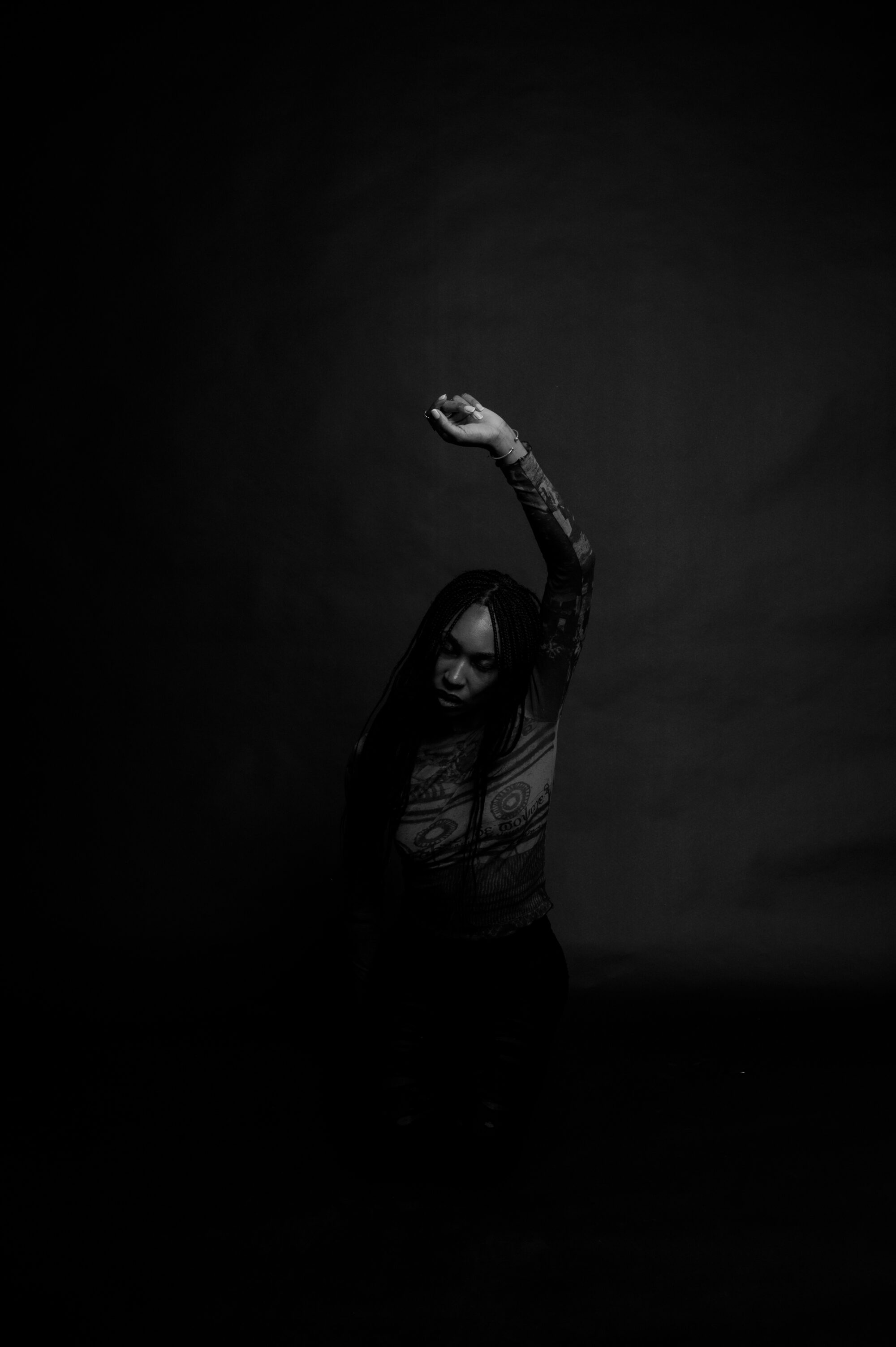
“‘Blackness is a frequency'”
Read the first part of the interview here.
Maybe that’s where we can also make a good bridge — between how the material world is built and how the creation of myths can help us build other worlds. Do you know the work of François Laruelle – “On the Black Universe – In the Human Foundations of Color”?
No, please tell me.
He starts from the Haitian constitution — which, interestingly, was the first constitution to define every human being as Black, first and foremost. What fascinates me is that the Haitian Revolution was the only anti-colonial revolution that truly succeeded, and yet Haiti became one of the poorest countries in the world — because of what the colonizers did to them afterward. And from there, Laruelle describes that we’re living in this “Black universe,” where Black is not just part of the color spectrum, but rather the radical backdrop of color itself. He proposes we think of it as uchromia — that instead of just seeing, we must become seers. We have to stop looking and start visioning — become visionaries. And I think that’s something you put quite beautifully when you spoke about being disobedient, about building a community. So maybe it’s about coming together as a group of outsiders — a collective conspiracy for building a different future.
Exactly. Exactly that. And I think it’s really like the Haitian Revolution, and especially the ritual of Bois Caïman that took place before the revolution. That was led by high priestesses. Dutty Boukman was also deeply connected to sound, to rhythm, and to what sound does to the body, and this idea of neuroplasticity. So that’s really interesting.
I’m very lucky to have connected this year with Queen Mother Dowoti Désir — she’s the Queen Mother of the Vodoun diaspora. She’s also an incredible academic, and she said something that really stayed with me. She said she feels that Blackness, which ties directly to what you were saying about the constitution, is a frequency. And that inspired me so much.
Even if you think about color in terms of frequency, how they’re connected, it’s a really powerful idea. So I think even going back to that could be interesting to talk about. It also connects to how I’ve evolved — how I understand what I do. Maybe for me, disobedience is becoming more and more of a spiritual practice and a spiritual perspective.
It’s about realising that it’s not only about the material structures and systems, but also about what’s happening in the occult — and recognising that, even though we obviously need resistance and revolution on the material plane, that’s not all. It’s also about acknowledging that everyone has their place. I feel more connected to investigating and thinking about what’s happening in the invisible world – thinking about reenchantment. What happens when we break the enchantment of capitalism? What happens then?
And thinking about reenchantment, like you said, this idea of stepping away from the eye, and turning toward the ear, where hearing becomes the foundation for a new vision. That’s really important to me. I actually come from photography, that’s my background, it’s what I studied. And I came to it already from an activist position. My idea of being a photographer was always deeply connected to journalism – documentary photography, poetic slow journalism – and speaking about many of the topics I still deal with today.
But then, through understanding photography as a medium, and seeing the broader impact it had — how it reinforced stereotypes, how it helped maintain psychosocial structures I didn’t believe in, I felt I had to step away from the camera. That was one of the first important decisions for me. I asked myself: “How can I still do the work I wanted to do?”
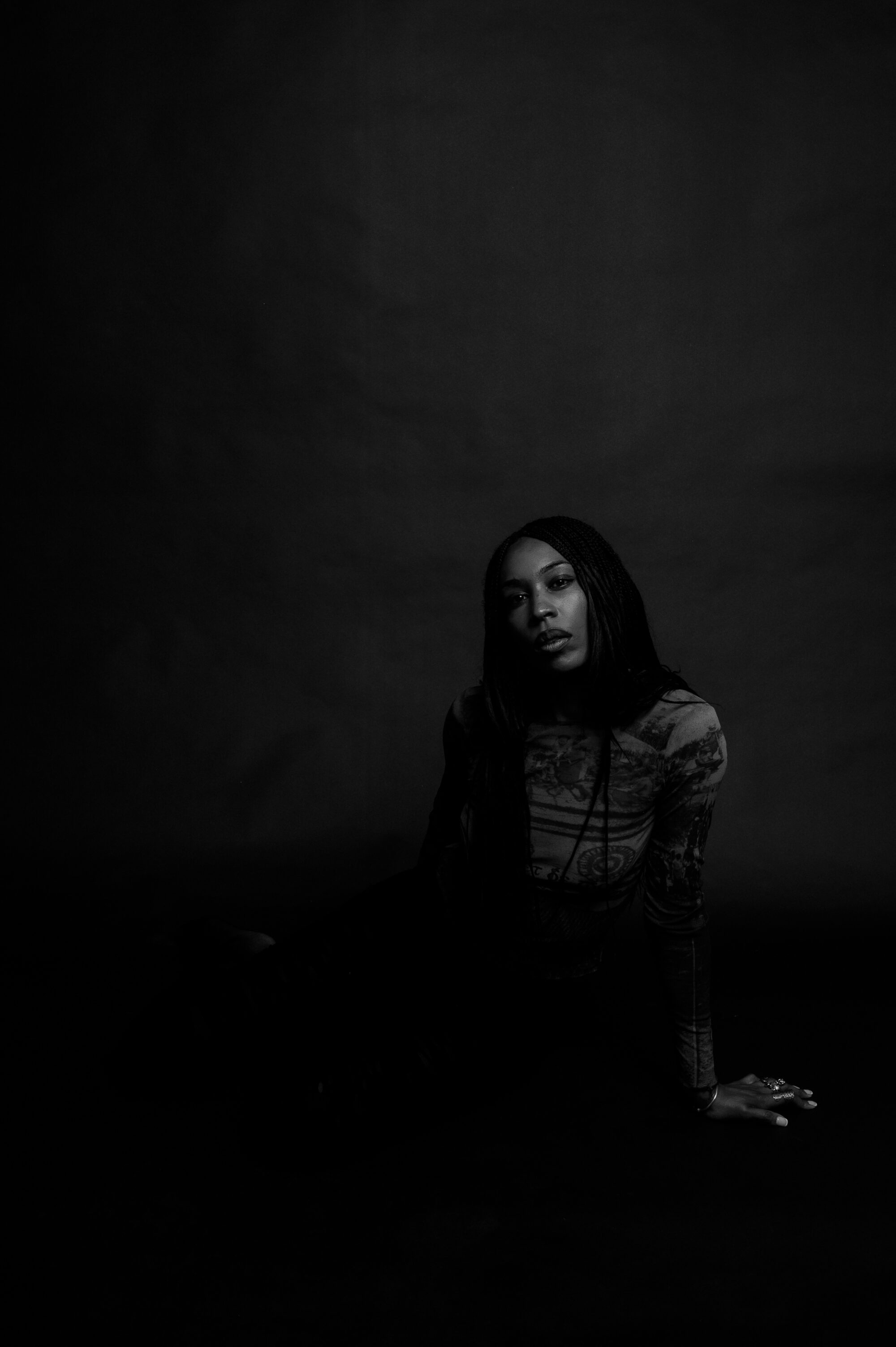
“disobedience is becoming more and more of a spiritual practice”
Are you still taking pictures?
It’s interesting – I feel like now it could start again. It really came from a particular point. I went so deep into it because I wanted to be a war photographer. That was my goal, you know, I wanted to be out there. And then obviously I did… I worked a bit. And in the bigger picture, it’s not a critique, because I do think there are a lot of important organisations, like Doctors Without Borders, UNICEF, and others, that use photography as a way to get funding. And that’s valid. But I did a few internships with some of those organisations, and sometimes it was really disappointing — understanding the power of images, but then also seeing that, in situations of war, there could be a choice: a small plane might be able to bring either medicine to people in need, or a photographer with all their equipment. And sometimes, they would choose to send the photographer instead of the medicine and food. That really made me reflect on the economy of the image, and I realised I didn’t want to be part of that anymore.
So I think that’s also what’s really interesting. When I moved into making music, the first impulse wasn’t necessarily about making club music. That came later. At first, I was thinking more in terms of sonic journalism — thinking about how to transcribe sound, how to talk about these things in a way that could trigger, like you said, a more visionary position. Because I think sound has that power. You can close your eyes and start seeing landscapes, start feeling architecture, feel distress, feel nostalgia, or transport yourself to personal memories. So I really felt the power in that.
But yeah — it’s interesting, because I think with photography, it was a bit easier to reach that point of disillusionment. I’ve had moments of that with music too, but with music, it feels more infinite. There are so many instruments, so many possibilities, that I don’t yet feel like I could get tired of the medium. It’s such a vast playground. With photography, I reached a moment where I had the camera, and I saw different ways to express, to document, to archive — but I also felt really limited by the medium itself. By what the camera could do.
Sometimes, in a very conceptual or abstract sense, it was hard for me to be in that space where you have to choose: what is worthy of a picture? That became a big tension for me — this idea of objective truths supposedly coming from a camera. Whatever that even means. And then with the shift to digital — that brought another layer. Because there’s a big difference between working with celluloid or film, where you’re working with light and chemistry, with physical reactions… and working with digital, virtual images. That shift felt significant to me. All of that together made me say: “Okay, I need to put this camera aside. Maybe I’ll come back to it.” But I haven’t come back to it — not yet.
“I wanted to be a war photographer”
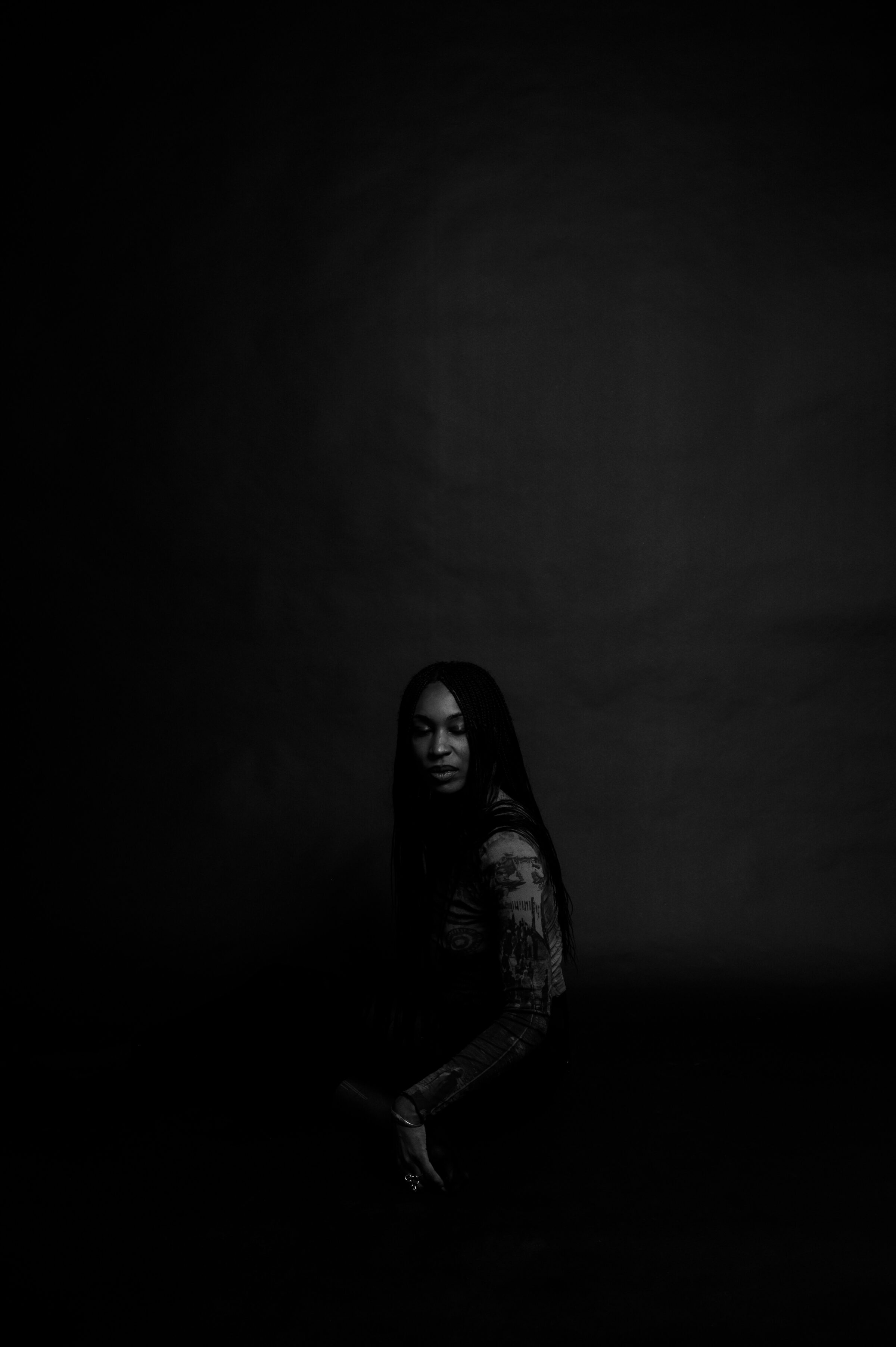
When you said that thing about the picture — it’s that, in a way, you’re always capturing only a certain part of reality, a specific frame. You’re deciding what’s in the picture and what’s outside of it. And I think that’s quite similar to what happens with identity: you get fixed to a particular version of it, and everything that doesn’t fit within that frame is somehow excluded. So there’s an immunisation against change, in a way.
Exactly that. Yes.
And with music, I think it’s a bit different. If you’re in a space and you make a recording, most of the time you end up recording things you didn’t intend to capture in the first place.
Yeah, exactly. And I feel with music – and maybe this is also how I build my sets, or how I work in the studio – it’s like waiting until all the layers make sense, you know? I think that’s also tied to polyrhythm. And conceptually, in my current work, I think a lot about crossroads – if you know what that means in spiritual contexts. We see its significance in many Afro-diasporic and African spiritual traditions – this idea of performing rituals at the crossroads. But I also feel like the crossroads are a beautiful symbol for thinking about time existing on different planes – this idea of horizontal, linear time, and vertical, spiritual time. And I try to bring both of those ideas into a composition. But even when you’ve put all these elements together, it still has to make sense. That’s where the magic is. And maybe when you think of sound as consciousness, those are the moments when the sound and I are just like, “Hey… how are you?”
These moments where I feel like I’m getting to know the sounds – and suddenly, I’m like, “Okay, now it’s working. It’s leveled up.” That’s also part of the process.When I used to do live sets, I’d have everything laid out, even though there were still some parameters. But now, I really love improvising. Because there are so many factors involved, and one of them is definitely the energy that people give me during a set. That energy, which I connect to in real time, directly influences the rhythm. And that’s fascinating, because it means the rhythm changes depending on where I am. I remember I had shows in places like Germany or Belgium, where there’s more of a connection to straight 4/4 rhythms, something more rooted in techno or new beat. And then, the next day, I was in Lisbon. And suddenly, different rhythms would emerge, something funkier, more layered, different kinds of polyrhythms. And that happens again in other places too, depending on the history of the space. So I’ve also been thinking a lot about how music connects to the epigenetics of the environment.
Even though the sound goes through my own body and personal history, and I do a lot of research to guide it, I’m very intentional in the beginning about the ideas I’m sending, about the way I shape the music. I know what I want to say. But at the same time, it’s also fascinating how the music gets translated through the sociocultural and musical connections that local people already have. And that’s beautiful, because even though I come from somewhere else, the music somehow still connects to what people know. But then the challenge becomes: how do I take that familiarity, and through improvisation, move into unknown territory? How do we create new rhythms together?
That’s something I’ve been really focused on — I’ve even started forcing myself to record all my sets now. Which is its own kind of beauty. There’s something special about the temporality of performance — when nothing is recorded, and I go into a trance. A lot of times, I don’t even know what happened during the set. But when I do have a recording, and I listen back, I’m like: “Wow… okay… how did I get here?” And I think that’s something I’ve learned from ancient archives and from Indigenous Sound Studies – the importance of the audience becoming an active part of the ritual. Of the music. They’re musicians too. It’s not just me.
That’s quite amazing.
“How do we create new rhythms together?”
Yes — musicking is basically always a communal process.
And I feel like, sometimes, that’s one of the things I try to do when I have opportunities to speak about sound and music – I always try to explain this to people. Because I think the other side of it is that many people have been educated in this kind of museum-based way of dealing with culture, where we look at things very passively. People don’t always realise that even when you’re walking through a gallery or a museum, you’re engaging in a certain mode of perception, one shaped by a cultural system that has been built in a particular way.
Obviously, I don’t always want to go into the darker histories of that, but it is tied to the history of the human zoo, the freak show, the way we look at things. Especially when it comes to artefacts, like the Nkisi figures or the spiritual objects of Indigenous peoples, they’re always placed in a context where you go to the museum, and the label just says “artist unknown.” We never know who made the work. But then, you walk into the wing with Western classical paintings, and the artist’s name is right there, you know exactly who made the work. That already creates a kind of friction, and that’s part of what we’re dealing with. So I always try to speak about that, about how cultural engagement is not a passive act. We’re all in this together.
“cultural engagement is not a passive act”
That’s something that also liberated me, personally, because I think, as an artist, there can be so much pressure to deliver a “good show.” And I’ve been reflecting on that. I try not to take it too seriously, because I know there are parameters outside of my control. Is the audience open enough? Are the conditions right? Are we in a space where this energy, this knowledge, can actually come through?
A lot of the time, it’s just me setting the situation, playing rhythms to trigger myself, so I can enter a trance state, so I can open up and act as a vessel for the music to come down. But there are definitely times when it just doesn’t work — like, I’ll spend 30, 45 minutes thinking “eh… it’s not happening.” I’ll keep trying, playing all the sounds, trying to get somewhere — and maybe I’ll only have 10 minutes where I actually feel like it’s happening.
Yes, I think the audience plays a crucial role in making the performance. If they’re just standing still, how is anything going to happen? There’s no way — you can’t make a ritual on your own.
Exactly. Exactly. And sometimes it feels very heavy to carry that alone. That’s also why I sometimes feel more drawn to other spaces, especially in contrast to academic music circles. I’m still very interested in club culture. I’m still interested in spaces that, if you think in terms of “high” versus “low” art, are maybe more expressive in different ways. I often find that I can connect more with people in those spaces, because they come in with a different kind of expectation, or sometimes no expectations at all. Because sometimes that elitism, which can be present in the music world, also brings in audiences with very fixed ideas, about what “good music” is, or what’s “not good music.”
And that makes it really hard to build a ritual, when people already walk in thinking they know what should happen. So sometimes, for me, it’s actually been really meaningful to play in places outside of Berlin, or Amsterdam, or London, the big cities. Because there’s something else happening in those other places. Maybe they’re more open, just because they haven’t been jaded by too much — by all those definitions of what is or isn’t “good.”
The most recent hype.
Exactly, exactly. I love the places where that doesn’t exists.
“building a larger collective space with no borders”
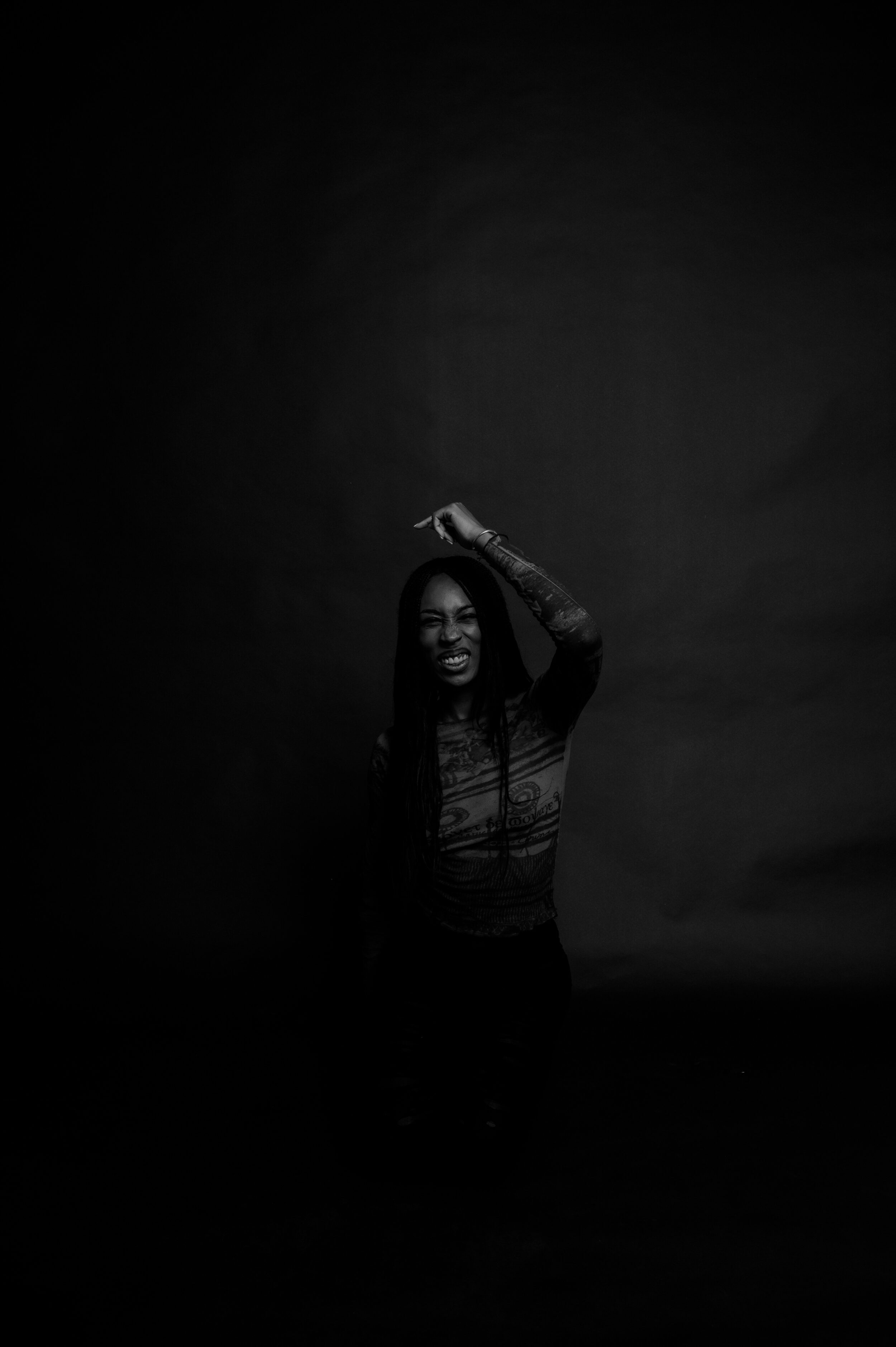
I just listened to your Boiler Room DJ set before the interview, and I found it beautiful — it’s quite different from your musical productions. Your productions feel like something coherent, almost ‘closed’ or self-contained. In contrast, your DJ set ignores genre and tempo boundaries, and moves through diverse atmospheres. It works with multiplicities, rather than just differences.
I like to think of it as a kind of crash – bringing together things that are unexpected, while still reacting to the audience and making people dance. I try to find music that’s maybe a bit of an outsider itself. It becomes a nice expression of this thing.
I’m always happy when, after a set, people come up to me and say, “What were all those tracks you played? I tried to Shazam them but couldn’t find any of them.” That makes me happy, because it’s also part of this idea of secrecy. I spend a lot of time searching for music that maybe only a few people know about. It connects to this mindset of secret societies and layers. And I think there’s something beautiful in that feeling. Maybe it’s personal, because of my own history — always feeling like an outsider, never really fitting in. When I was younger and listening to music, I often found myself at pretty obscure events — maybe gabber parties or things like that. And I always felt that, even in the vastness of not fitting in, you can still find your tribe. So maybe, unconsciously, when I make these sets, I think, “Okay, let me make a set for people like me.” For people who didn’t fit in, either. It’s a way of maybe helping that tribe find itself. I think DJing becomes a tool for bringing people together.
And maybe that comes from my background working with NON. We weren’t all in the same city, but there was this idea of connecting across distance, building a larger collective space with no borders. Even when it was purely virtual, it still felt real – like we were close, like we were part of something. So I think it’s between those ideals: using my music like a form of initiation, and also trying in my DJ sets, in my productions to be completely content with not making it work for the majority. Of course, there’s something beautiful in being able to connect with a wide audience – that’s probably the dream for many musicians, right? But I’m also happy just knowing that the music can build its own secret society, its own kind of tribe. A tribe that doesn’t even need to state what its motives are. Just knowing that if you like this music, then maybe we’re already quite similar. Maybe we already share a vision for the world — the kind of future we want to see.
Yeah, sometimes it’s less important to have the masses – and more important to have the right people coming together.
Yes. I feel like that’s becoming more and more important to me, actually.
“music can build its own secret society, its own kind of tribe.”
You just mentioned NON. So I’d be curious, how did you come to use the term NON as being so central?
I think the core of NON, and definitely how it was built and what it meant at that time, cause obviously, it feels like a lot of things have changed since 2015 or 2014, when we met and decided to do this. It’s been beautiful to see, after starting this idea of a collective space and a collective ideology, how many similar things began popping up in electronic music. So I think that was really amazing for us to witness.
But I think with NON – and definitely from my position – it came again from this spirit of disobedience, of being anti-establishment, anti-norm. NON as negation, but also NON as a refusal: the refusal to accept what had been predefined for us. That was really important – to start from this position where, even though we came from different places and heritages, we were united by this desire to not be boxed in.
At that time, and still now, so much was happening in the world, so for us, it was crucial to focus on the question of what it means to be African. What it means to be African and African and electronic musician, without it being reduced to “world music.” And also, as I mentioned earlier, to merge ideas of Africa and technology, not as separate things, but in full awareness of the oppressive systems and extractive processes. Thinking about technology and its connection to the earth – to the resources extracted from the earth, most of which are found on the African continent. The extraction of labour. To reflect on what people call the “migration crisis,” while remembering the historical entanglements and assumptions about Africa – why Africa has been placed, or remains, in a particular state economically, culturally, socially.
So in that way, the spiritual element was also really important: being spiritually connected to the continent, while also recognising that we’re all making music using computers and Ableton. Yet at that time, there wasn’t really space to be African in electronic music – which felt like a paradox, because the computer is African to begin with.
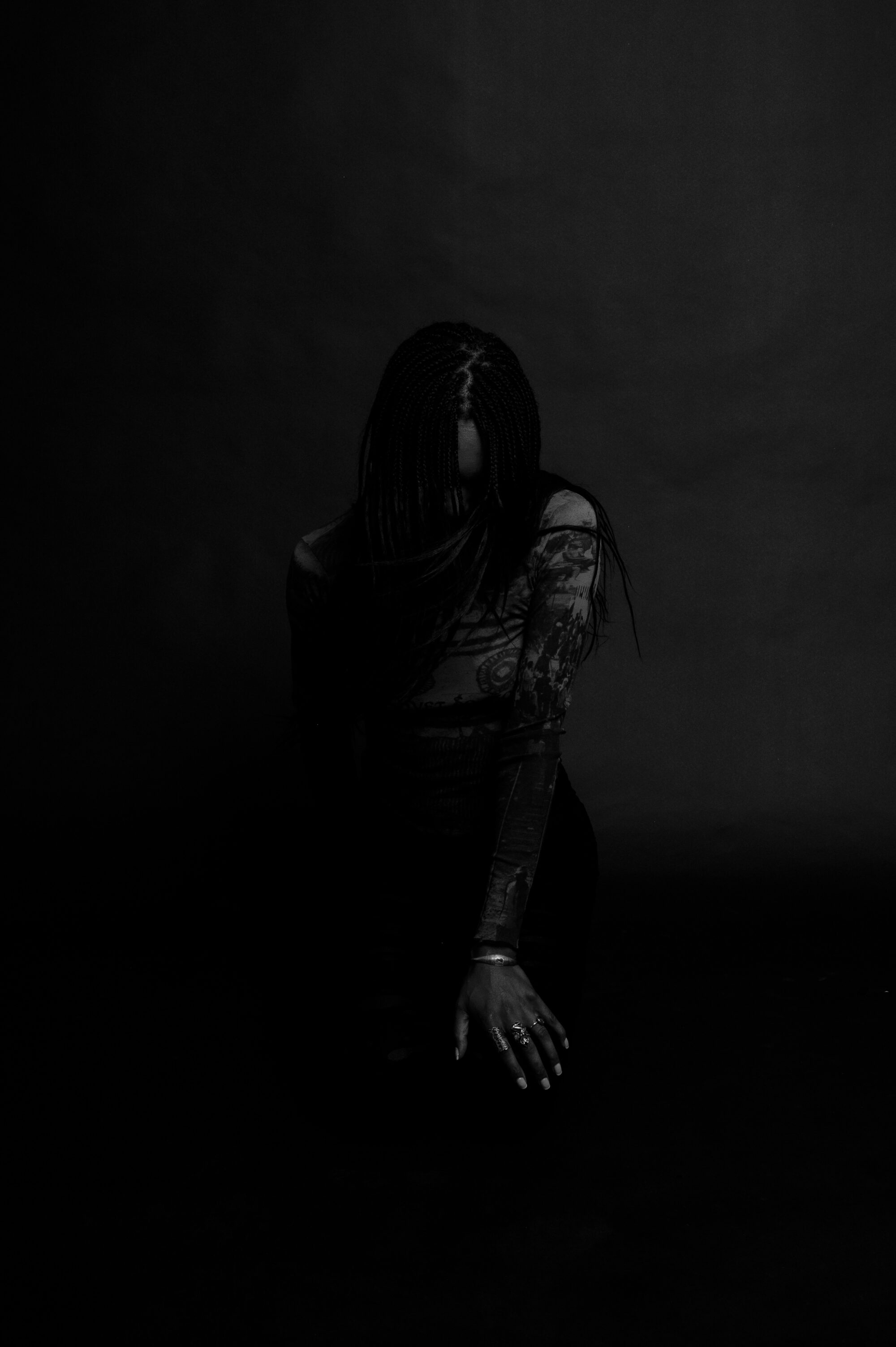
“NON as negation, but also NON as a refusal”
But I think what probably also contributed to the success of NON, or how we managed to gain that visibility so quickly after launching, was the way it was built, the overall structure. Also, something Chino [Chino Amobi] was really researching deeply was the visual identity and the design connected to it, and this more “military” approach to the collective. That was quite interesting. I think we were really pushing back against certain dynamics, and that’s just part of how the music industry works.
But for us at NON, it was also really important to fight against this fascination with personhood – with the individual behind the work, where the focus isn’t just on who the person behind the music is, but rather: What is the history behind the music? What are the references? Those were the things we wanted to bring to the forefront in how we presented ourselves. And I learned a lot from that. It definitely carried over into my own practice that it’s also completely possible to work that way. Because I think, as artists, probably now more than ever, there’s so much pressure to focus on personhood in connection with the music. It’s always about “What’s in the biography?” But does music exist on its own, or is it the person who elevates it? Is it the conceptual framing that elevates it?
Those are things I’m constantly thinking about – how to frame the work. The music does what it does, it’s not just the music on its own, but also: What is the framework in which the music exists? That’s why I like working with the idea of secret societies, or drawing inspiration from ancient mythologies – asking: What is the story built around the music? That becomes really important. It’s not just about how the music is released, but also how it moves into the world. And then it becomes really interesting, because some people will connect just to the music and not want to hear anything about the references – and others might really enjoy the mythology, the story around it, and that helps them enter the music in a different way.
Even releasing music can become a space of knowledge production. That’s what I meant earlier, I’ve always been interested in slow journalism, and in using all of this in a way that lets the music stand on its own, but also offers a space to feed in ideas and knowledge. And that might actually be the most interesting part.
I guess the difference between the DJ sets and my solo work is that the DJ sets more clearly show the diversity of influences and references behind my practice. But I’m always very intentional about which elements I put upfront when I talk about the music. So even if a track is influenced both by ancient African rhythms and by industrial music, I might not directly talk about the industrial side. I’ll highlight the African rhythms, just because I’m always thinking about how to balance things out on a broader level – which stories get told, and which don’t. And then I ask myself: What are the references that actually need that little extra push, that extra visibility?
“I don’t want to claim ownership over something sacred”
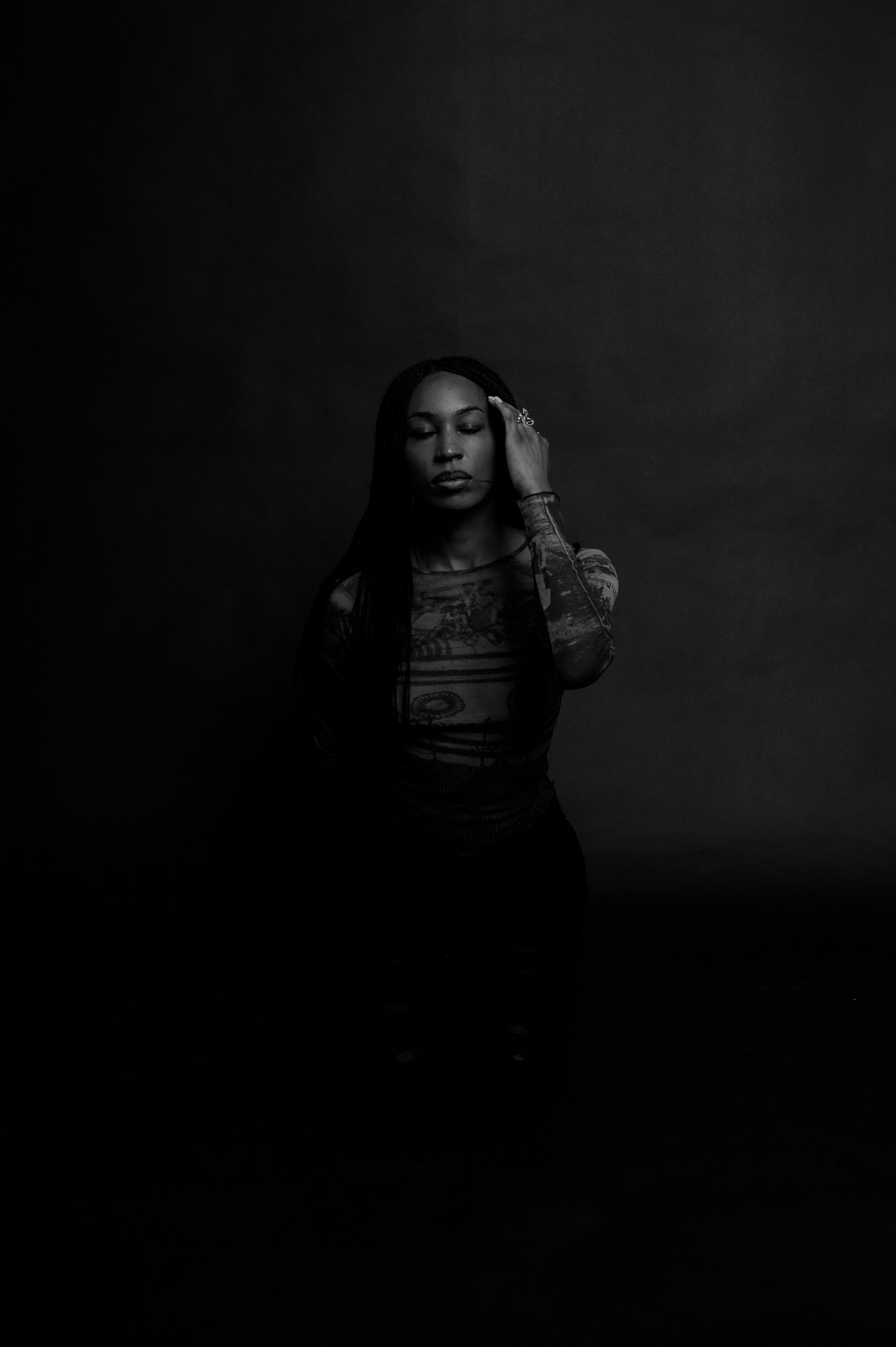
I think just how you ended – it’s nice that it also enhances this idea of more of a cross-pollination. So it’s not so much about drawing boundaries between things, but more about how one, two or more things together can generate multiplicities rather than just differences.
Yes, that’s really beautifully said. Definitely. But then also, and this is something I always like to play with, even in that multiplicity, I still think about the idea of secrets. And that’s maybe my own way of being disobedient, my own way of conceptually resisting this idea of transparency. I often ask myself, how can I still keep some things for myself? How do I avoid feeling like I have to put all my cards on the table?
So I use that in all aspects of my artistic practice – even in my more visual or gallery-based work, when I’m doing sculptures, art shows, or interdisciplinary performances with dancers or performers. I always work with a set of references, which – like you said – cross-pollinate with each other. But the thing I choose to foreground is very intentional, and it’s also a form of protection. It’s a way of protecting the work by not giving away all the secrets.
What I’ve found so fascinating while working with these ancient archives, or while channeling or speaking with people more closely connected to spiritual practices, is this: Something that doesn’t often get spoken about is how, in the unfinished project of capitalism, in the violent destruction of peoples, cultures, and knowledge systems, one of the first things that were attacked, that were hunted down to be destroyed, were spiritual and cosmological practices.
So a lot of the sonic and ritual practices – and the artefacts we now see in museums – weren’t just preserved as objects of curiosity. They were trophies. They were proof of conquest. Just like hunters keep the head of an animal, these artefacts are displayed as symbols of domination: Look what we managed to conquer. And many of these practices, which may not originally have been part of secret societies, were forced to go underground. That’s the tension I sometimes carry within myself when working with these archives – when I channel ideas, speak with elders, or learn to read between the lines because of my own initiation into songs, stories, and mythologies. I never want to repeat colonial methods. I never want to stand there and say, “Look what I discovered,” whether in my work, my music, or how I speak about it. I don’t want to claim ownership over something sacred.
That’s why musical performance, or at least the way I approach musical performance as ritual, becomes such a powerful space. It allows me to engage with these archives in a way that keeps them hidden, encrypted. They’re embedded in symbolism, gestures, sound, and their combinations. They can be shared, they can be felt and experienced — without being made transparent. Because that act of forced transparency would be a very colonial gesture.
And it’s important to remember that if these things became secret, if they were hidden away or protected underground, it was for a reason. And when you look into the histories of secret societies, you see that betraying a secret could mean being exiled – or worse. That’s how serious it was to protect knowledge. So for me, having the privilege of being entrusted with fragments of that knowledge means also taking responsibility: I won’t give away the secrets. That’s part of how I protect it. At the same time, this creates a dilemma — because sometimes that information could actually help people today. These archives could offer support, or even practical ways of reconnecting with lost knowledge. I think a lot about how these archives could help people remember how much agency we actually have. Because one of the first things that oppressive systems do is to strip people of their agency.
Thanks much for the conversation!
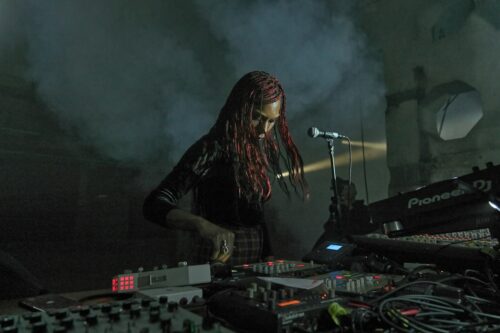
Nkisi

This article is brought to you by Struma+Iodine as part of the EM GUIDE project – an initiative dedicated to empowering independent music magazines and strengthen the underground music scene in Europe. Read more about the project at emgui.de
Funded by the European Union. Views and opinions expressed are however those of the author(s) only and do not necessarily reflect those of the European Union or the European Education and Culture Executive Agency (EACEA). Neither the European Union nor EACEA can be held responsible for them.